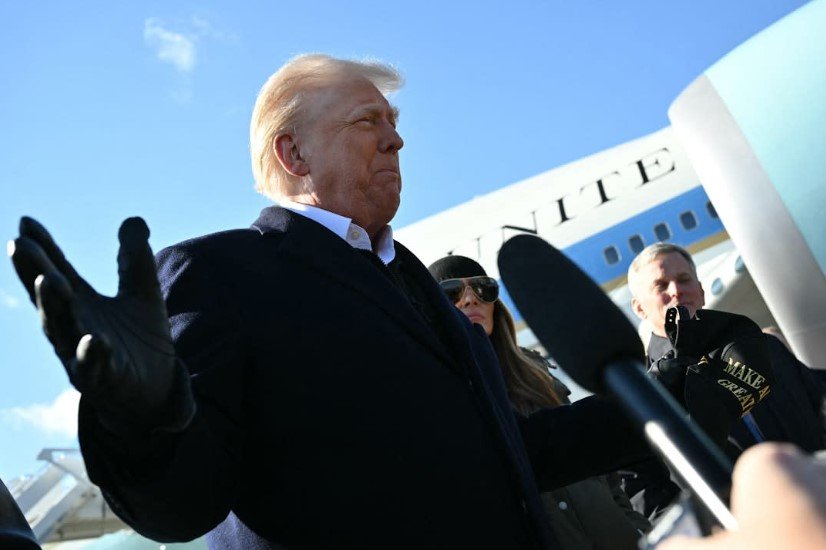In a bold move to protect the United States from future missile threats, President Donald Trump has revealed plans for a $175 billion missile defense system called the ‘Golden Dome.’ Drawing inspiration from Israel’s Iron Dome, this high-tech shield aims to neutralize advanced ballistic and cruise missiles from rivals like Russia and China. The president also named Space Force General Michael Guetlein to spearhead the ambitious project.
A New Era in Missile Defense: What Is the ‘Golden Dome’?
President Trump’s announcement of the Golden Dome system has stirred quite a buzz. Imagine a shield so powerful it can intercept next-generation aerial threats before they ever hit American soil. That’s the promise here.
The system is partially modeled on Israel’s Iron Dome — which has been a lifesaver for Tel Aviv since 2011, intercepting hundreds of rockets and missiles launched from hostile neighbors. Trump’s plan takes this concept and scales it up massively for the U.S., with more money, technology, and military muscle behind it.
Golden Dome is expected to handle a variety of threats, from ballistic missiles hurtling through the atmosphere to stealthy cruise missiles that fly low and fast. According to Trump, it will be “ready by the end of his term,” signaling a rapid push to operational status.
The $175 billion price tag sounds hefty — because it is. But, hey, when it comes to national security, no one really likes to cut corners.

The Man Behind the Shield: General Michael Guetlein Takes Charge
Not just any general gets to lead a project like this. Trump has appointed General Michael Guetlein from the U.S. Space Force as the Golden Dome’s program manager. Guetlein has a reputation as the go-to guy for military planning, especially in space and advanced defense technologies.
This appointment tells us a lot. The U.S. is serious about integrating space-based and ground-based defenses. Guetlein’s expertise suggests Golden Dome won’t be just a ground-level missile shield but a layered, multi-dimensional defense network.
It’s a sign the Space Force, established only a few years ago, is gaining real clout within the Pentagon’s hierarchy. Trump’s reliance on the Space Force also hints at a future where outer space plays a critical role in national defense.
How Golden Dome Fits Into the Bigger Picture of U.S. Security
Missile defense has long been a hot topic in Washington. Past programs often faced delays, cost overruns, and political squabbles. Trump’s push with Golden Dome seems designed to break that mold — with a direct presidential nod and a firm timeline.
The missile threat from countries like Russia and China is no joke. These nations have poured billions into developing hypersonic weapons and stealthy cruise missiles that traditional defense systems struggle to detect.
Trump’s Golden Dome project claims to be an answer to those evolving threats, a kind of umbrella to protect American cities and critical infrastructure.
It’s also part of a broader legislative package called the One, Big, Beautiful Bill, which aims to reshape U.S. security and military policy. Congress must approve this funding, and that’s where some fireworks may happen.
Interestingly, Canada has shown interest in joining the project. Prime Minister Mark Carney’s office said talks are ongoing about a new security and economic relationship with the U.S. That hints at Golden Dome possibly becoming a continental shield — not just a U.S.-only affair.
What’s Next? Challenges and Questions Ahead
While Golden Dome sounds impressive on paper, there are hurdles ahead. First, $175 billion is a colossal sum. Lawmakers in Congress will surely scrutinize every penny, especially as other priorities compete for funding.
Also, the tech itself will be pushed to its limits. Can the system truly keep pace with hypersonic missiles traveling at Mach 5 or higher? Will it work seamlessly with existing missile defense networks like THAAD or Aegis?
The program timeline — aiming to deploy within Trump’s current term — sounds ambitious, almost optimistic. Defense projects this size usually drag on for years.
And what about international diplomacy? The involvement of Canada might set a precedent for other allies, but it could also complicate geopolitical dynamics, especially with Russia and China watching closely.
Bullet points outlining key features of the Golden Dome program:
-
Designed to intercept ballistic and cruise missiles, including hypersonic threats
-
Inspired by Israel’s Iron Dome, but scaled up for the U.S. homeland defense
-
Led by Space Force General Michael Guetlein, emphasizing space-ground integration
-
Part of a broader legislative security package pending Congressional approval
-
Potential involvement of Canada in a continental defense partnership
Comparing Missile Defense Budgets: Where Does Golden Dome Stand?
Golden Dome’s budget dwarfs most current systems. That signals a major leap in ambition but also brings pressure to deliver results.
Public Reaction and Political Implications
Public opinion is split. Supporters hail Golden Dome as a necessary shield in uncertain times, applauding Trump’s vision. Critics question the astronomical price and worry about militarizing space and increasing tensions with rival powers.
The political tug-of-war is just getting started. Democrats and Republicans may find common ground on protecting the homeland but differ sharply on spending and strategic priorities.
One thing’s for sure: Golden Dome is shaping up to be a defining defense project of the mid-2020s. Whether it fulfills its promises or becomes another costly blueprint remains to be seen.
